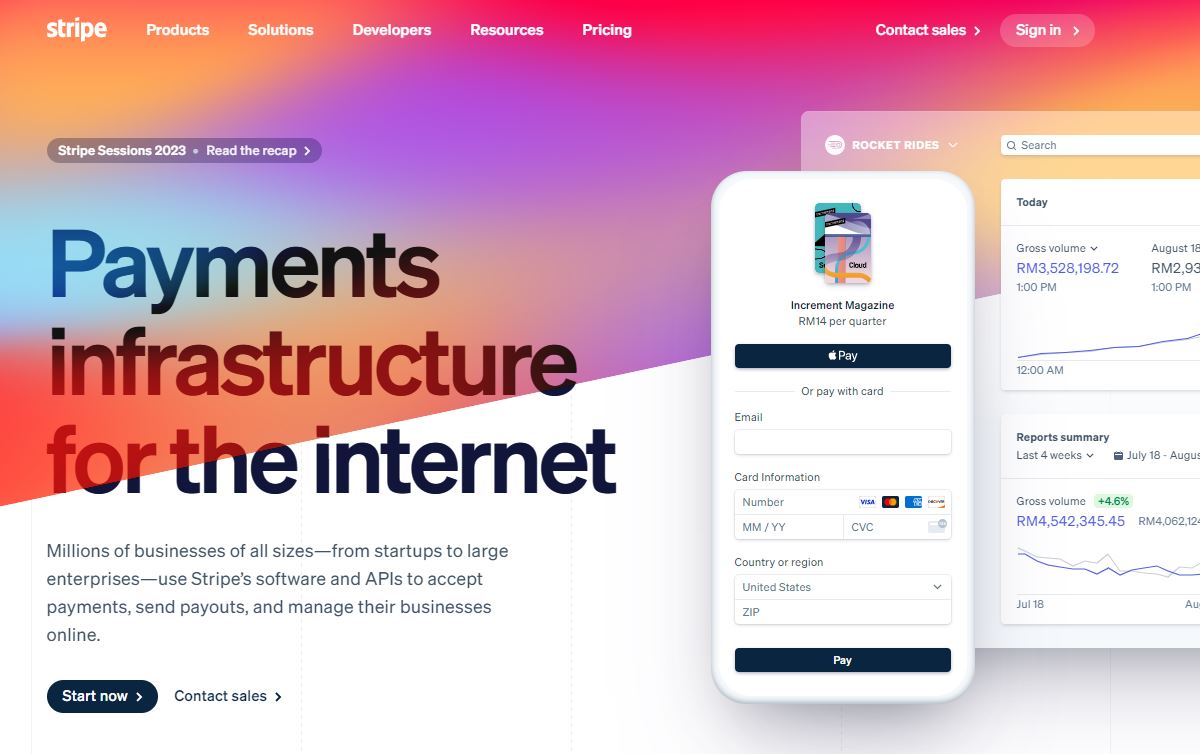The e-commerce landscape has seen immense growth, spurred by technological advancements and changing consumer behaviors. Central to this revolution is the ability to process payments seamlessly and securely. Among numerous payment processing platforms, Stripe stands out, offering a robust solution for online stores to accept international payments, provide multiple payment options, and ultimately, enhance customer experience.
1. Utilizing Stripe for Online Stores
The decision to set up an online store is only the first step in a digital entrepreneurship journey. One of the most critical aspects of this process is selecting a reliable, secure, and user-friendly payment gateway. This is where Stripe comes into play.
Offering a comprehensive suite of payment processing services, Stripe is highly favored by online businesses. It provides a highly secure platform that complies with the most stringent industry standards, reducing the risk of fraud and ensuring customer data remains protected. Moreover, its seamless integration with various e-commerce platforms makes the payment process hassle-free for both businesses and customers. Thus, choosing Stripe for online stores translates to smoother transactions, reduced cart abandonment rates, and enhanced customer satisfaction.
2. Online Store with Multiple Payment Options
To thrive in the digital marketplace, businesses must cater to a diverse range of customer preferences, including payment options. Consumers across the globe have different preferred methods of payment, spanning from traditional credit and debit cards to digital wallets and direct bank transfers.
Having an online store with multiple payment options is no longer a luxury but a necessity. Stripe addresses this by supporting over 135 currencies and a wide array of payment methods, including all major debit and credit cards, digital wallets like Apple Pay and Google Pay, and many country-specific payment methods. This ensures that no matter where your customers are or what their preferred payment method is, they can transact with your online store smoothly, leading to increased conversion rates.
3. E-commerce Platform with Flexible Payment Methods
The e-commerce world is dynamic, and businesses must adapt quickly to stay ahead. This includes having flexible payment methods to cater to varying customer behaviors and market trends.
Stripe offers an array of flexible payment options to suit different business models. Whether you need to accept one-time payments, set up recurring payments for subscription services, or offer pay-as-you-go pricing, Stripe has you covered. This flexibility extends to its easy integration with various e-commerce platforms, including Shopify, InstanteStore, WooCommerce, and BigCommerce, among others. By leveraging the flexibility of Stripe, you can offer customized payment solutions that align with your business model and customer preferences.
4. Accepting International Payments Online
One significant advantage of operating an online store is the opportunity to cater to a global customer base. However, the ability to accept international payments online can be a challenge, owing to factors such as currency conversions and diverse payment preferences across different regions.
Stripe simplifies this process by accepting payments in over 135 currencies. It handles currency conversion automatically, depositing the funds into your account in your chosen currency. This eliminates the hassles of currency management and foreign transaction fees, allowing your business to truly cater to customers worldwide.
5. Setting Up Payment on Your Online Store
With Stripe, setting up payment on your online store is a straightforward process:
- Create a Stripe account: Visit the Stripe website and sign up. Provide the necessary business and bank account information.
- Integrate Stripe with your e-commerce platform: This step is often as simple as navigating to your e-commerce platform’s payment settings and selecting Stripe as your payment gateway.
- Configure your payment options: Within Stripe’s dashboard, set the payment methods and currencies you wish to accept.
- Test the integration: Stripe provides test card numbers so you can ensure the checkout process works smoothly before going live.
